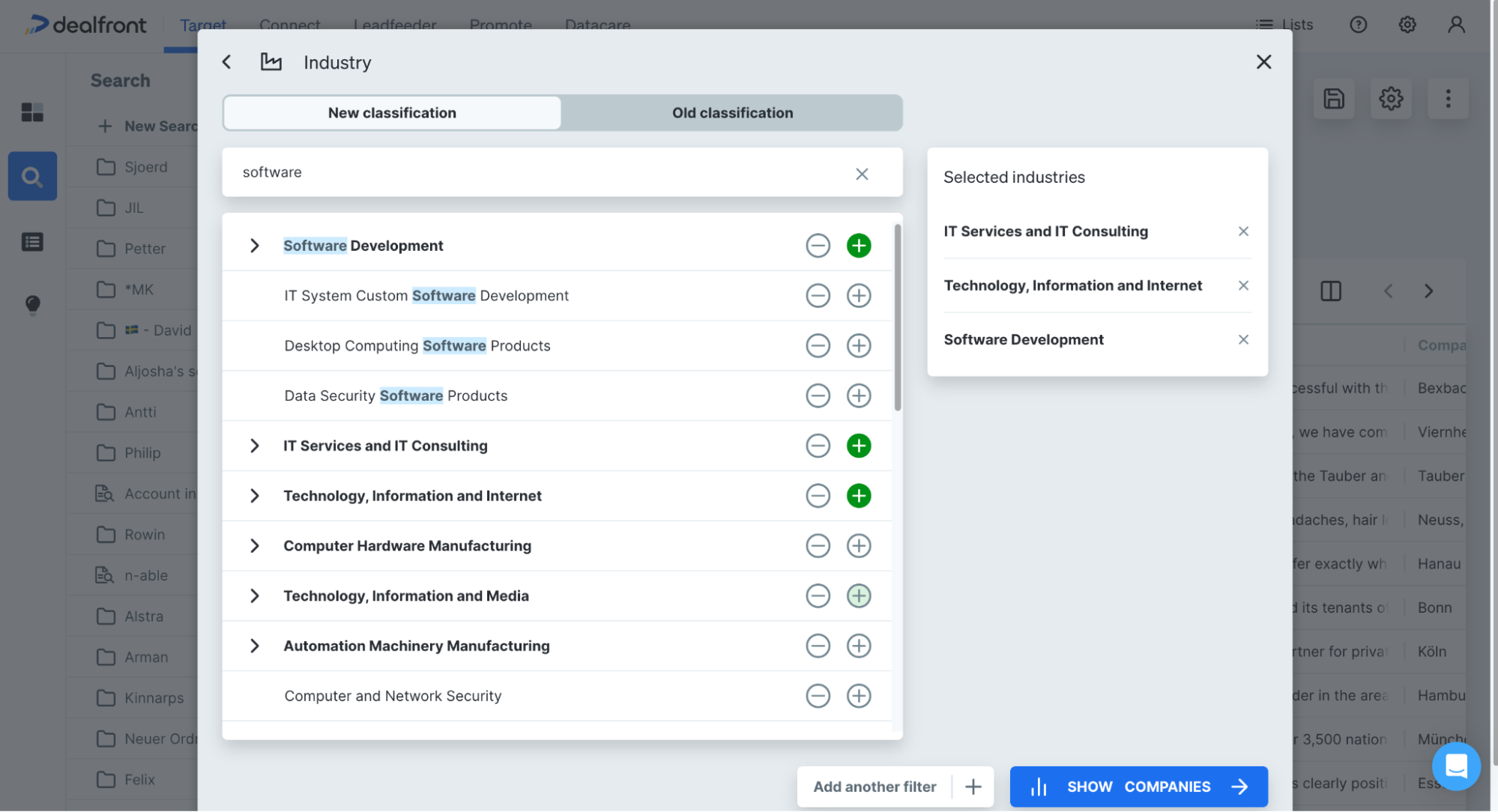Expected results
Get a clear and accurate assessment of your TAM to inform strategic decisions
Allocate resources effectively by focusing on high-potential market segments and opportunities
Develop a strong market entry and expansion plan based on your understanding of your market potential.

This play provides a step-by-step guide to identifying the Total Addressable Market (TAM) for your product or service. The TAM gives you an estimate of the total sales potential available to you if your product reaches the entire market. Understanding your TAM enables your business to prioritize resources, target the right customer segments, and set realistic growth goals. Ultimately, this information will allow companies to make more informed decisions about their corporate strategies.
What is TAM?
The Total Addressable Market (TAM) is the total revenue your business could make if it captured 100% of its target market. Simply put, it shows how much money is on the table if every potential customer bought your product or service.
Understanding TAM helps businesses plan for growth, make decisions about entering new markets, and allocate resources most strategically. You can estimate TAM by either looking at industry reports (top-down approach) or using your own customer and sales data (bottom-up approach).
TAM is closely linked to two additional key metrics: SAM (Serviceable Addressable Market) and SOM (Serviceable Obtainable Market). SAM represents the portion of the TAM that your products and services can realistically address, focusing on the customers who need what you offer. Meanwhile, SOM refers to the share of the market you currently serve or aim to capture, reflecting your position in the market and competitive advantage.
Benefit of TAM
Understanding the TAM offers several key benefits for businesses. It gives businesses a clear picture of the maximum revenue potential, helping leadership teams identify which markets to prioritize. This insight allows for more strategic resource allocation, which in turn means that time and money can be invested where they can have the most impact.
Knowing the TAM supports informed decisions on whether to enter new markets or develop new products. It also helps businesses effectively communicate market opportunities to investors, stakeholders, and internal teams, allowing leadership teams to ensure that everyone’s efforts are aligned towards growth.
How to identify your TAM
Traditionally, businesses typically worked out their TAM using two main methods: the top-down approach and the bottom-up approach.
- 1.
Top-down approach - this method relied on industry reports, market research, and analyst insights. Companies would take overall industry size and market data, then apply assumptions or percentages to estimate their potential share of that market.
- 2.
Bottom-up approach - this involved analyzing internal data, such as customer sales, pricing, and purchase frequency, to build an estimate of market size. This approach was more detailed and tailored to the business’s specific circumstances but required a more thorough data set to be effective.
These traditional methods required a combination of data analysis, market research, and strategic assumptions, making them time-consuming and sometimes less accurate than modern TAM calculators.
Today’s TAM calculators are a far more effective means of working out TAM and are preferred by businesses today because they provide a faster, more accurate way to estimate market size. These tools use real-time data, advanced algorithms, and automated processes, which reduces the need for manual calculations and assumptions. As a result, businesses can make business decisions with confidence, better prioritize their resources, and present clearer market opportunities to stakeholders. The ease and precision of TAM calculators have made them an essential tool in data-driven business environments.
Market segmentation
Market segmentation is the process of dividing a broad target market into smaller, more manageable groups of customers who share similar characteristics, needs, or behaviors. This allows businesses to tailor their products, services, and marketing efforts to specific segments, making them more effective and relevant.
For example, instead of targeting all consumers with the same message, a company might create different campaigns for different age groups, income levels, or geographic locations. By focusing on specific segments, businesses can better meet customer needs and improve their chances of success.
To do this, companies must first understand who their target audience is:
Define your target market
To define your target market, start by identifying who your potential customers are. Break down the broader market into specific segments based on common characteristics like industry, company size, and location. You can do this through customer profiling, market research, and analyzing data from your CRM (Customer Relationship Management) system. This approach helps you tailor your marketing strategies to meet the needs of different customer groups more effectively.
Determine market size
To work out the market size for your product, you first need to know how large the overall market is.
Determining your market size manually involves a number of steps to estimate how large the potential market for your product or service is. Here's how you can do it:
- 1.
Identify your target market - start by defining who your customers are, including demographics, geographical location, and purchasing behavior.
- 2.
Calculate total market demand - estimate the total number of potential customers. This could involve looking at industry reports, census data, or conducting surveys.
- 3.
Determine market share - assess how much of the market you can realistically capture. This might involve analyzing competitors, pricing strategies, and your unique selling proposition.
- 4.
Multiply by the average purchase value - estimate how much an average customer spends on your type of product or service annually.
- 5.
Calculate market size - multiply the number of potential customers by the average purchase value to determine your market size.
This process gives you a rough estimate of your Total Addressable Market (TAM) without the use of specialized tools.
However, by using tools like Dealfront Target, you can quickly calculate your TAM, giving you a clear picture of the potential revenue opportunity. This helps you understand the full scope of your market, allowing for better strategic planning and resource allocation.
Just follow these simple steps:
- 1.
Open Dealfront Target and filter for “Countries & Regions”
![How to calculate your TAM with Dealfront Target - filter for “Countries & Regions”]()
- 2.
Select your relevant “Industry”
![How to calculate your TAM with Dealfront Target - Select your relevant industry]()
- 3.
You can select a range “Company Size” > Click “show companies”
![How to calculate your TAM in Dealfront Target - Select a range for company size]()
- 4.
You will see the number of companies that match your search criteria
![How to calculate TAM in Dealfront Target - You will see the number of companies that matches your search criteria]()
Calculate your TAM
To calculate your Total Addressable Market (TAM), simply multiply the number of companies in your target market by the Average Contract Value (ACV).
Number of companies X ACV = TAM
For a quick and easy way to work this out, you can use our free TAM Calculator tool. This tool streamlines the process, saving you time and ensuring accuracy in your market assessments.
Using the Dealfront TAM Calculator is easy. Follow these quick steps to find out your TAM in a matter of seconds.
- 1.
Navigate to the Dealfront TAM Calculator.
- 2.
Define your target market by first selecting the countries you are most interested in. Filtering your TAM by location is important because it allows you to target locations where your product or service is most relevant. This also means you can optimize your resources to focus on only the best opportunities, ultimately saving time and money.
- 3.
Next, filter down the industries you are targeting. By selecting specific industries to focus on, you can consolidate your efforts on the most relevant markets, allowing you to target and allocate resources more effectively.
- 4.
You can further refine your results by selecting the employee headcount ranges that are of most interest to you. Across many industries, market segmentation often relies on company size, typically measured by headcount. Products and services can then be tailored for small businesses or large enterprises, each with its own distinct TAM.
- 5.
Finally, there is an optional step to add your annual contract value. This is not essential for the TAM Calculator to work, but if you can add it, the results you get will be more accurate to your specific TAM. A more accurate estimate of your TAM will help provide a more accurate estimate of potential revenue.
- 6.
Finally, hit “calculate”.
![How to calculate your TAM with Dealfront TAM calculator]()
- 7.
To discover a little more about how your TAM is broken down, click “Explore your TAM”.
What to do next?
Once you've calculated your TAM, the next step is to explore the companies within that market. Start by identifying your Ideal Customer Profile (ICP) to focus your efforts on the most valuable buyers for your product or service. This targeted approach ensures that your marketing and sales strategies are directed towards those who are most likely to benefit from and invest in what you offer, maximizing your resources and potential for growth.
Expected results
Once you have identified your TAM, you will have a solid foundation for developing an effective market strategy, allowing you to allocate your resources effectively. Regularly revisiting your TAM is essential, especially when the market shifts or new products are launched, as it ensures your strategies remain aligned with current opportunities. By following this playbook, you'll be well-equipped to navigate changes and continue driving growth for your business.
Subscribe to updates
Turn insights into action
Ready to grow your pipeline?
GDPR Compliant
Built & Hosted in EU
Deep B2B Data













